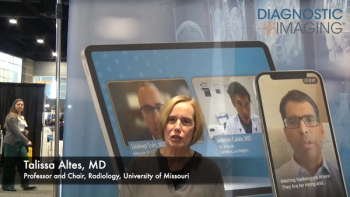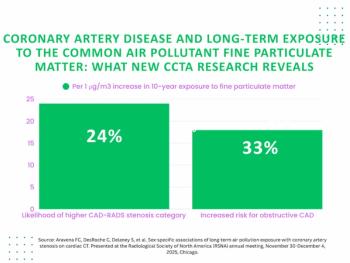
What a New Meta-Analysis Reveals About CT Diagnosis of COVID-19
In a review of patient data from 42 countries, researchers found that standardized typical findings on computed tomography (CT) for COVID-19 had a pooled sensitivity rate of 70 percent and a pooled specificity rate of 90 percent.
The use of typical computed tomography (CT) findings to diagnose COVID-19 appears to have a high degree of reproducibility among radiologists, demonstrating moderate sensitivity and high specificity, regardless of the region of the study, according to a new meta-analysis examining patient data from 42 countries.
For the meta-analysis, recently published in
The meta-analysis authors found that typical CT findings for COVID-19 had a pooled sensitivity rate of 70 percent and a pooled specificity rate of 90 percent. They also noted that national income and study region had no significant impact on the sensitivity and specificity rates. The researchers noted a sensitivity rate of 68 percent in developing countries and 71 percent in developed countries. Specificity rates were 89 percent for developing countries and 91 percent for developed countries.
“These findings highlight that once typical findings of COVID-19 are defined in standardized reporting systems, radiologists can reproduce CT performance globally, despite geographic and resource variation,” wrote meta-analysis co-author Soon Ho Yoon, M.D., a clinical associate professor in the Department of Radiology at Seoul National University Hospital in Seoul, South Korea, and colleagues.
(Editor’s note: For related content, see “
For interobserver agreement on typical CT findings, the meta-analysis authors noted an overall pooled estimate of k values of 72 percent. Yoon and colleagues pointed out that the pooled k value with the RSNA classification system (79 percent) was 15 percent higher than that of the CO-RADS system (64 percent).
The researchers also noted that influenza incidence was “historically low” during the height of the COVID-19 pandemic and cautioned that there is substantial overlap between COVID-19, pneumonia, and influenza with respect to chest CT findings. Yoon and colleagues emphasized that the pooled estimates in the study are reflective of the early phase of the COVID-19 pandemic prior to widespread vaccine availability and the emergence of the Omicron variant.
In regard to study limitations, the researchers noted difficulty in assessing the impact of vaccination on CT diagnosis of COVID-19 given that the majority of the reviewed studies were retrospective with low vaccination rates in the cohorts. The study authors also acknowledged that symptom presence, symptom onset and disease severity, all of which can affect CT diagnosis of COVID-19, were not noted in many of the reviewed studies.
Newsletter
Stay at the forefront of radiology with the Diagnostic Imaging newsletter, delivering the latest news, clinical insights, and imaging advancements for today’s radiologists.




























